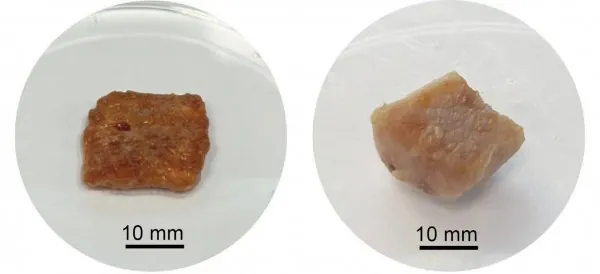
Revolutionary Lab-Grown Pork: How Sorghum Grain Paves the Way for Future Meats!
2024-10-28
Author: Rajesh
Introduction
Meat straight from a lab is no longer a concept of the future—it’s here! For over ten years, cultured meats have been in development, and 2023 has seen the emergence of lab-grown chicken in select U.S. restaurants. The latest breakthrough comes from an innovative use of sorghum grain, specifically kafirin proteins, which researchers have harnessed to create a new prototype of cultured pork.
The Benefits of Cultured Meat
Cultured meats are being hailed as a sustainable and humane alternative to traditional animal farming. They use far less land and water in their production while emitting significantly fewer greenhouse gases. Unlike their plant-based counterparts, cultured meats derive from actual animal cells. These cells are cultivated on advanced, porous protein scaffolds instead of being taken directly from living animals. Until now, common scaffold materials included wheat gluten, pea protein, and soy protein. However, these can trigger issues for those with gluten sensitivities and often require complex treatment processes.
A Breakthrough Study
In a groundbreaking study published in the Journal of Agricultural and Food Chemistry, researchers led by Linzhi Jing and Dejian Huang have introduced kafirin—a gluten-free, water-insoluble protein derived from red sorghum—as a new scaffolding material. This method improves usability, particularly for individuals with gluten-related allergies.
Innovative Techniques
The team's innovative approach included extracting kafirin from red sorghum flour and creating a 3D porous scaffold. This was done by soaking sugar cubes in a kafirin solution, allowing the proteins to adhere to the sugar crystals. Once the sugar was dissolved in water, a robust cube-shaped structure remained. The next step involved introducing pork stem cells to this scaffold. After a mere 12 days, the cells had successfully attached and differentiated into muscle and fat cells, closely resembling the texture of real pork.
Nutritional Properties
Nutritively, the cultured pork developed exhibited a higher protein content and saturated fat, while having reduced levels of mono- and polyunsaturated fats compared to raw pork. Moreover, the red pigments from the sorghum contributed not only to an appealing pork-like color but also endowed the cultured meat with antioxidant properties. Interestingly, due to the stability of the sorghum’s structural proteins, changes in texture or color post-cooking were minimal, allowing both raw and cooked versions to appear strikingly similar.
Future Prospects
While the researchers point out that fine-tuning is still required to perfect the nutritional balance and textural properties of this cultured pork, the initial findings underscore kafirin's potential as a viable scaffold material. This innovation could play a critical role in the development of cultured meat products that are not only healthier but also more inclusive for those with dietary restrictions.
Support and Acknowledgments
This study has garnered support from prominent organizations, including the National University of Singapore (Suzhou) Research Institute Biomedical and Health Technology Platform and the Natural Science Youth Foundation of Jiangsu, China.
Conclusion
The future of sustainable eating could indeed lie in laboratory-grown meats, with sorghum grain leading the charge! Stay tuned as this exciting area of food technology continues to evolve—you won’t want to miss what’s coming next in the world of lab-grown cuisine!




 Brasil (PT)
Brasil (PT)
 Canada (EN)
Canada (EN)
 Chile (ES)
Chile (ES)
 España (ES)
España (ES)
 France (FR)
France (FR)
 Hong Kong (EN)
Hong Kong (EN)
 Italia (IT)
Italia (IT)
 日本 (JA)
日本 (JA)
 Magyarország (HU)
Magyarország (HU)
 Norge (NO)
Norge (NO)
 Polska (PL)
Polska (PL)
 Schweiz (DE)
Schweiz (DE)
 Singapore (EN)
Singapore (EN)
 Sverige (SV)
Sverige (SV)
 Suomi (FI)
Suomi (FI)
 Türkiye (TR)
Türkiye (TR)